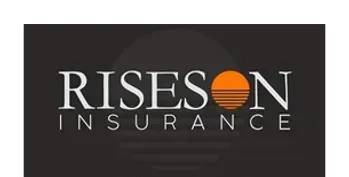
Understanding Personal Property Insurance
August 7, 2024 | Insurance
In our homes, we often accumulate a lifetime of memories and valuable possessions, from electronics and furniture to clothing and jewelry. But what happens if these items are damaged, stolen, or lost? That's where personal property insurance comes in. In this blog, we'll explore what personal property insurance is, why it's essential, and how you can ensure your belongings are adequately protected.
Personal property insurance is a component of homeowners or renters' insurance that provides coverage for your belongings. It protects against losses due to various perils, such as fire, theft , vandalism , or certain natural disasters. Personal property insurance can cover a wide range of items, including:
Furniture and Appliances: These include sofas, beds, refrigerators, and other household essentials. Electronics: Laptops, smartphones, TVs, and other gadgets are often covered. Clothing and Personal Items: From your favorite outfits to accessories like watches and handbags. Jewelry and Collectibles: Some policies offer coverage for high-value items, though additional endorsements or separate policies might be needed for particularly valuable pieces.
Financial Protection : Replacing lost or damaged items can be expensive. Personal property insurance helps cover these costs, ensuring you don't have to pay out of pocket. Peace of Mind : Knowing that your belongings are protected allows you to enjoy your home without worrying about potential losses. Coverage Beyond the Home: Many policies extend coverage to personal property while it's outside the home. For example, if your laptop is stolen while you're traveling, your insurance may still cover the loss. Protection Against a Variety of Risks: From fire and theft to accidental damage, personal property insurance can cover a wide range of perils.
Personal property insurance typically works in two main ways:
Actual Cash Value (ACV): This type of coverage pays out the value of your items at the time of loss, considering depreciation. For example, if your five-year-old TV is stolen, you'll receive a payout based on its depreciated value. Replacement Cost Value (RCV): This type of coverage pays the cost to replace your items with new ones of similar kind and quality, without considering depreciation. Using the same example, RCV would cover the cost to buy a new TV comparable to the one you lost.
To ensure you're adequately covered, consider the following steps:
Inventory Your Belongings: Create a detailed list of your possessions, including descriptions, purchase dates, and estimated values. This will help you determine the amount of coverage you need. Understand Policy Limits: Many policies have limits on specific categories of items, such as jewelry or electronics. If you own high-value items, you may need additional coverage or a separate policy. Review Your Policy Regularly : As your possessions and their values change, it's essential to review and update your policy to ensure continued adequate coverage. Consider Additional Coverage: If you have unique or high-value items, consider endorsements or floaters for additional coverage. These can cover items like fine art, collectibles, or expensive jewelry beyond standard policy limits.
Personal property insurance is a vital part of protecting the things that make your house a home. Whether you're a homeowner or a renter, having the right coverage can provide peace of mind and financial protection against unexpected losses.
At Riseson Insurance , we're here to help you find the right policy to fit your needs and ensure your belongings are well-protected.
What is Personal Property Insurance?
Why is Personal Property Insurance Important?
How Personal Property Insurance Works
How to Ensure Adequate Coverage
- Furniture and Appliances: These include sofas, beds, refrigerators, and other household essentials.
- Electronics: Laptops, smartphones, TVs, and other gadgets are often covered.
- Clothing and Personal Items: From your favorite outfits to accessories like watches and handbags.
- Jewelry and Collectibles: Some policies offer coverage for high-value items, though additional endorsements or separate policies might be needed for particularly valuable pieces.
- Financial Protection : Replacing lost or damaged items can be expensive. Personal property insurance helps cover these costs, ensuring you don't have to pay out of pocket.
- Peace of Mind : Knowing that your belongings are protected allows you to enjoy your home without worrying about potential losses.
- Coverage Beyond the Home: Many policies extend coverage to personal property while it's outside the home. For example, if your laptop is stolen while you're traveling, your insurance may still cover the loss.
- Protection Against a Variety of Risks: From fire and theft to accidental damage, personal property insurance can cover a wide range of perils.
- Actual Cash Value (ACV): This type of coverage pays out the value of your items at the time of loss, considering depreciation. For example, if your five-year-old TV is stolen, you'll receive a payout based on its depreciated value.
- Replacement Cost Value (RCV): This type of coverage pays the cost to replace your items with new ones of similar kind and quality, without considering depreciation. Using the same example, RCV would cover the cost to buy a new TV comparable to the one you lost.
- Inventory Your Belongings: Create a detailed list of your possessions, including descriptions, purchase dates, and estimated values. This will help you determine the amount of coverage you need.
- Understand Policy Limits: Many policies have limits on specific categories of items, such as jewelry or electronics. If you own high-value items, you may need additional coverage or a separate policy.
- Review Your Policy Regularly : As your possessions and their values change, it's essential to review and update your policy to ensure continued adequate coverage.
- Consider Additional Coverage: If you have unique or high-value items, consider endorsements or floaters for additional coverage. These can cover items like fine art, collectibles, or expensive jewelry beyond standard policy limits.
